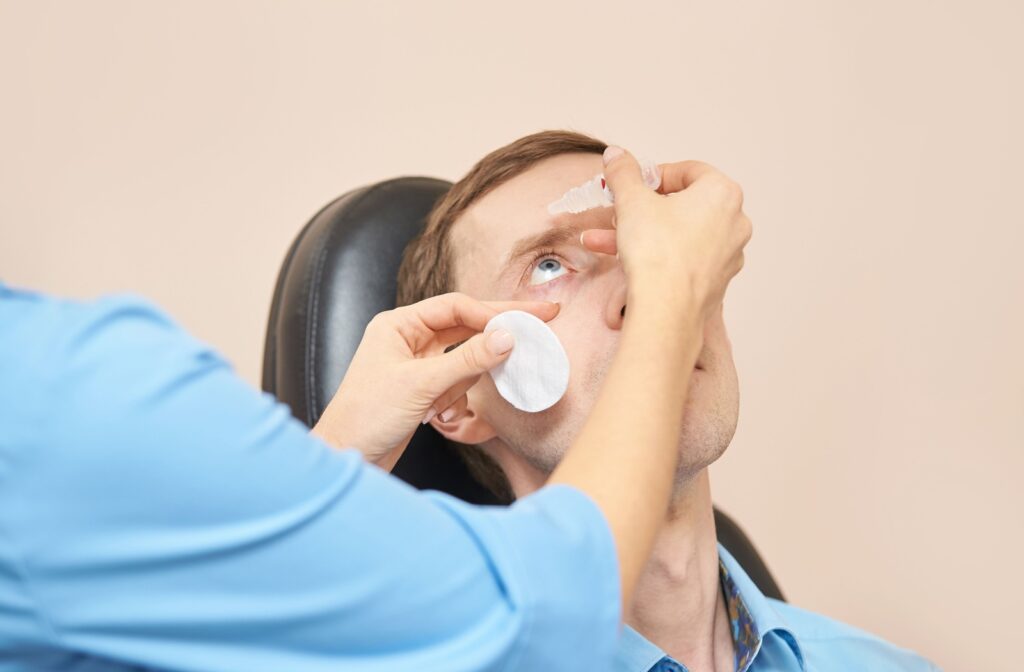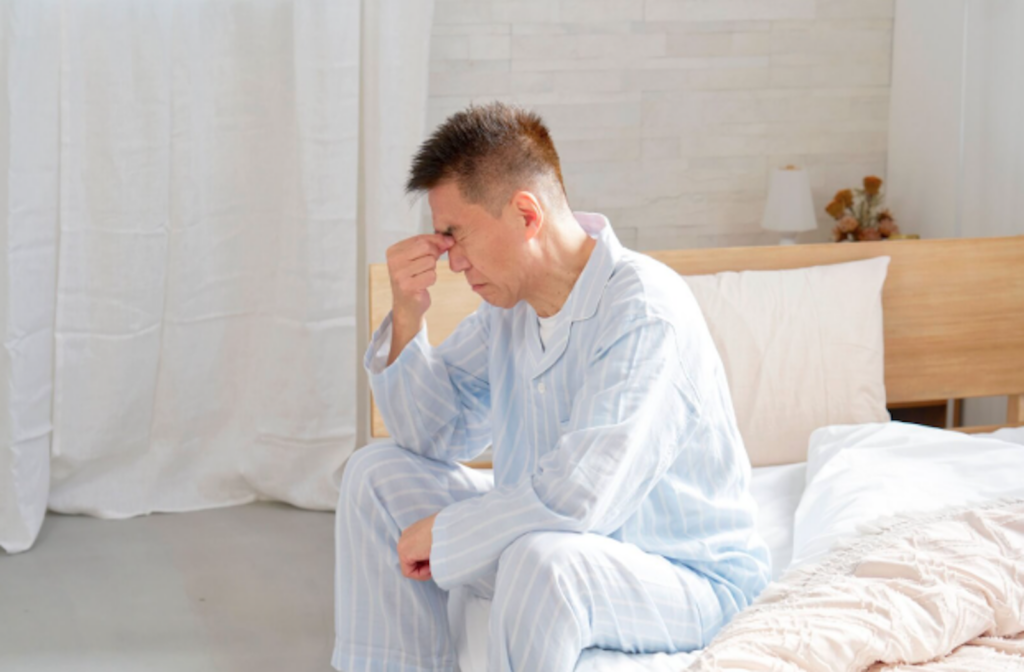Waking up with dry, irritated eyes can make mornings feel more frustrating than refreshing. Whether you’re dealing with burning, stinging, or a gritty sensation, morning dry eye is a common complaint, and one that shouldn’t be ignored.
While it’s tempting to reach for over-the-counter drops and move on with your day, persistent dry eye upon waking is often a sign of something deeper. From eyelid function to your sleep environment, there are many potential contributors. Fortunately, there are also targeted ways to treat the issue, starting with understanding what’s causing it.
Booking an appointment with your optometrist is the first step in identifying the cause of your dry eye and developing a plan to combat dry eye symptoms in the future.
What Does Morning Dry Eye Feel Like?
Symptoms vary from person to person, but may include:
- A scratchy or gritty sensation upon waking
- Blurred vision that improves with blinking
- Burning or stinging eyes
- Redness or soreness
- Light sensitivity
- Excessive tearing (ironically, a symptom of dryness)
- Discomfort when putting in contact lenses
For some, these symptoms disappear by mid-morning. For others, they persist, or worsen, throughout the day.
Common Causes of Dry Eyes in the Morning
Incomplete Eyelid Closure (Nocturnal Lagophthalmos)
If your eyes don’t close fully during sleep, the exposed surface may dry out overnight. This condition, known as nocturnal lagophthalmos, can cause significant irritation in the morning. You may not even know it’s happening unless someone else notices.
Meibomian Gland Dysfunction (MGD) & Blepharitis
Your eyelids contain tiny oil glands called Meibomian glands, which secrete oil to help stabilize your tear film. If these glands become blocked or inflamed, your tears can evaporate too quickly, leading to dryness. This condition is known as Meibomian Gland Dysfunction (MGD) and is one of the most common causes of dry eye.
MGD is often associated with blepharitis, a condition marked by inflamed eyelid margins and buildup along the lash line. Both conditions can interfere with tear quality and cause overnight dryness.
Dry Indoor Air
Heated air, air conditioning, and ceiling fans can all lower indoor humidity, which speeds up tear evaporation. This is especially common during Winnipeg’s dry winter months, when low humidity and closed windows create dry sleeping environments.
Contact Lens Wear
Even if you remove your contacts before bed, long-term lens wear can disrupt tear production and contribute to morning dryness. Sleeping in contact lenses, even occasionally, can make things worse.
CPAP Machines & Mask Leaks
For people with sleep apnea, CPAP machines are essential—but if the mask isn’t properly sealed, escaping air can blow directly onto the eyes and dry them out overnight. This is sometimes referred to as xerophthalmia.
Medications & Medical Conditions
Some medications, like antihistamines, decongestants, antidepressants, and blood pressure drugs, can interfere with tear production. Health conditions such as diabetes, thyroid disease, and autoimmune disorders may also contribute to dryness.

What Can Help Relieve Morning Dry Eye?
Fortunately, there are several ways to manage morning dry eye. Some can be done at home, while others may involve in-office treatment.
Use a Nighttime Eye Ointment
Unlike eye drops, lubricating ointments are thicker and designed to protect your eyes throughout the night. They’re especially helpful for people with incomplete eyelid closure.
Sleep with a Moisture Chamber or Eye Mask
Moisture goggles or sleep masks help reduce tear evaporation while you sleep and can offer protection from air movement and environmental dryness.
Humidify Your Bedroom
Adding a cool mist humidifier to your sleeping space can reduce dry air and protect your tear film overnight. This is especially helpful in winter.
Practice Daily Eyelid Hygiene
Warm compresses and lid scrubs can help soften blockages in the Meibomian glands, reduce inflammation, and promote healthy tear production.
In-Office Treatments for Persistent Dry Eye
If your symptoms don’t improve with at-home care, in-office treatments can offer more lasting relief by targeting the underlying causes of dry eye—particularly Meibomian Gland Dysfunction.
Intense Pulsed Light (IPL)
IPL therapy uses controlled pulses of light to reduce inflammation and improve the flow of oil from the Meibomian glands. It’s especially effective for people whose dry eye is linked to rosacea or chronic eyelid inflammation. By restoring balance to the tear film, IPL can lead to fewer flare-ups and more comfortable mornings.
Radiofrequency (RF)
RF therapy delivers gentle heat to the skin around the eyes to melt thickened oils and stimulate oil gland function. It also promotes collagen production, supporting eyelid structure and skin health. RF offers both therapeutic and cosmetic benefits in a comfortable, non-invasive procedure.
Both treatments are typically performed in a series and may be combined for optimal results, depending on your individual needs.
When to Seek Professional Care
If you’re experiencing dry eyes every morning, it’s time to book a dry eye assessment. Ongoing symptoms can affect your vision, productivity, and overall well-being.
A comprehensive evaluation may include:
- Imaging of the Meibomian glands
- Tear break-up time measurements
- Review of your medication history and lifestyle factors
- Eyelid function and blink pattern assessment
From there, your optometrist can create a personalized treatment plan to reduce symptoms, improve tear stability, and help you feel better—starting first thing in the morning.
Start Your Day with Clearer, More Comfortable Eyes
Morning dry eye doesn’t have to be your daily routine. By understanding the cause—whether it’s incomplete eyelid closure, gland dysfunction, environmental triggers, or something else—you can take steps toward lasting relief.
If your symptoms persist despite using drops or humidifiers, professional treatment can make a significant difference. In-office options like IPL and RF therapy are designed to restore gland function, reduce inflammation, and improve your tear film—so you can wake up to clarity and comfort.
At Village Optical in Winnipeg, we provide personalized dry eye care tailored to your lifestyle and symptoms. Whether you’re dealing with occasional dryness or a chronic condition, we’re here to help you find answers and solutions that work. Book your dry eye consultation today and discover what a difference restful, refreshed eyes can make.



